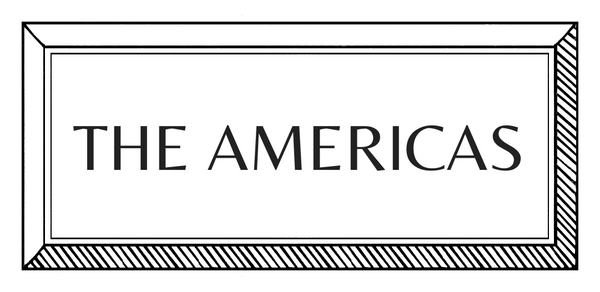CRAFT STORIES | GLOBAL | MULTI-MEDIA
Around the World with Asprey

Wooden and silver boxes, a collaboration between Asprey and Silvia Furmanovich © Milo Brown.
Global craftsmanship flows through every sketch, stitch, chisel and cast at Asprey’s West London design studios, not far from the iconic brand’s Bruton Street store in Mayfair.
Founded in 1781, this bastion of British heritage works hand-in-glove with master artisans from Japan to Brazil, Ireland to Afghanistan, designing and producing modern heirlooms of the highest quality. The world’s oldest and rarest skills are not archived here, but alive and evolving; engraved in glass and silver, embroidered and etched into leather goods, carefully crafted in wood, stone and lacquer.
In a world of ephemera, mass production and instant gratification, Asprey values the enduring beauty of the well-made, the deeply known, and the patiently crafted. Read on to discover five extraordinary objects crafted in collaboration with skilled artisans around the world.
UK | Glass Blowing & Carving | Jonathan Harris
Jonathan Harris is a second-generation British glassmaker, specializing in creating fine contemporary glass with his small family team (his wife, Alison, and daughter). The insides of these mouth blown glass vases and bowls - designed exclusively for Asprey - are carefully layered with enamel colors, which are carved through using diamond point drills and unique contemporary carving techniques developed by Jonathan himself. This creates a tactile cameo in fine detail and relief.
The striking objects, each signed by Jonathan and engraved with the year of production, reveal the richness and complexity of glass. "Drawn to the challenge of combining detailed graphic imagery with the fluidity of hot glass - its translucency, reflective qualities, graduations of colour, texture & form - this fascination led me to study the ancient art of cameo carving," Jonathan says. "Over the past four decades, I have developed and perfected my own carving techniques, transforming this heritage craft into a distinctly modern expression of cameo art glass," he adds.
Each piece draws inspiration from the natural world. “Its forms, color, patterns, and seasonal rhythms continually guide my imagination and shape the designs we create,” says Jonathan. He describes the collection as a, “bridge between tradition and modernity”. “By creating cameo for Asprey, we hope to show how this ancient art form can continue to evolve and remain relevant in a contemporary design landscape. It strengthens our belief that meticulous craftsmanship, when combined with vision and storytelling, can create precious pieces that are perhaps timeless and enduring.”
Brazil | Wooden Marquetry | Silvia Furmanovich

Wooden and silver boxes, a collaboration between Asprey and Silvia Furmanovich © Milo Brown.
Silvia’s path to craft was forged through deep curiosity and intuition, rather than formal training. The New York-based designer, whose jewelry collections combine wooden marquetry with precious metals and jewels, grew up in Sao Paolo, Brazil, where she watched her father, a goldsmith, in his workshop. Later in life, she identified master artisans across different traditions, from wood marquetry in the Amazon to miniature painters in India, and learnt directly from their hands and techniques.
“It has always been a process of listening, observing, and then interpreting these traditions into my own jewelry and decorative works,” Silvia says. Describing nature as her greatest teacher, Silvia starts each of her pieces with research and a story. “I collect inspiration during my travels, whether it’s an ancient textile, a botanical form, or an architectural detail, and translate those into sketches and ideas.”
She describes artisans as "guardians of culture", guiding them through her designs, while giving space for their knowledge and hands to shine. Her marquetry boxes use sustainable fallen wood gathered from the Amazon rainforest and expertly inlaid by Brazil-based artisans, with Asprey's silversmiths adding the final touches. This collaborative dialogue allows Asprey to merge Brazilian craftsmanship with British decorative arts and its own refined heritage. “The process is always about layering culture, technique, and narrative into a final object that feels timeless,” Silvia says.
Afghanistan | Gem Cutting | Najib Khalidi | Turquoise Mountain

Stone Boxes crafted exclusively for Asprey by Turquoise Mountain @ Milo Brown.
An expert in gem cutting and a teacher of the craft, based at the Turquoise Mountain Institute in Kabul, Najib comes from a family of skilled craftsmen. He learned the craft of making stone boxes (such as the semi-precious stone boxes, crafted for Asprey and pictured above) from his uncle and cousin. "My uncle learned the craft from his father, who learned from a local lapidary artisan. [They] taught me the skills and patience needed for this craft and encouraged me to aim for the highest standards."
It's an exacting process and Najib plans each project carefully, based on the materials and design requested—usually lapis, nephrite, or green onyx, with black marble for the interior. He begins by cutting the stones from larger boulders before carefully sanding and polishing them. For the interiors of Asprey's boxes, he cut the stones to the exact measurements and joined the pieces together. For the exteriors, he cut, sorted and assembled the lapis and nephrite stones, before glueing them to the marble base, and then trimming, sanding, polishing and applying the finishing touches.
"Every step is done with patience," he says, explaining that with the support of Turquoise Mountain he has been able to purchase the best quality Lapis at the best price.
Leatherwork | Japan | INDEN

Asprey's 167 Micro Mini Handbag in Cobalt © Milo Brown.
Asprey’s beautiful 167 handbags in Crosshatch and Soft leather owe their unique appearance to a traditional Japanese technique for creating lacquer patterns on deerskin. The skill was developed In the late Edo period (1603-1868) by founding father, Uehara Yushichi, and soon adorned items favored by Japan's fashionable and upper classes. Of the period’s INDEN craft houses, INDEN-YA (founded in 1582) was the only one to survive, its masterful techniques transmitted to successive generations of family heads through oral instruction only, to preserve the secret of the craftsmanship.
Today, the family secret has been revealed and INDEN-YA technology has been adapted to create new, yet timeless, objects for discerning customers worldwide. But you'll find no modern hacks here - every step of the process remains steeped in ancient Japanese tradition. To make the leather workable, artisans carefully stretch it over a period of time before smoothing and ironing it with a hot metal spatula.
The cultural use of Japanese lacquer (Urushi) - which derives from the sap that oozes from trees and is both adhesive and waterproof - can be traced back to ancient times and has been actively practiced in Japan for more than 400 years. Today, INDEN-YA masters mix Urushi to create distinctive patterns, as seen on Asprey’s 167 handbags, while the lacquer is known for the unique sheen it develops over time.
Furniture Making | Ireland | Zelouf & Bell

Champagne cooler and tray from Asprey's Beverly Hills Collection © Milo Brown
Ireland-based furniture makers Zelouf & Bell - Belfast-born Michael Bell and New Yorker Susan Zelouf - have been making museum-quality furniture since 1992, together with their team of master craftspeople. Their award-winning designs can be found in private collections, public offices, embassy residences, churches and museums, all over the world, each lyrical in form and rigorous in function.
Their Beverly Hills Collection for Asprey, comprising a curved, Art Deco-esque bar cart, champagne cooler and tray (both pictured below), pays homage to LA's legendary Beverly Hills Hotel, the ‘Pink Palace' at the top of Rodeo Drive and Sunset Boulevard.
Inspired by the Art Deco-era streamline luxury vessel SS Normandie, and the Normandie Hotel in San Juan, the cart’s lush green motif comes from the iconic banana leaf pattern. The process is labor intensive: green pressure-dyed timbers are inlaid into a pink mother-of-pearl background, before mirror-finished stainless steel curved rails are wrapped around the cart's curves to act as handles.
Interviews by Camilla Frances
Images by Milo Brown
Styling by Cabana







































